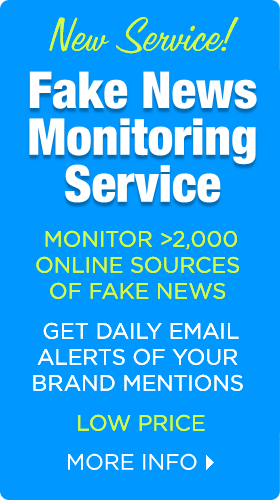
Photo credit: La Citta Vita
Editor’s note: This post was contributed by Dawn Ellis of alldayPA, a telephone answering service.
Every time you speak about your business you’re marketing. And with every business conversation comes an opportunity to raise awareness of your brand, promote your services and increase sales. A marketing strategy helps give structure to the many different marketing tactics you may use.
Without a clear marketing strategy, your business loses direction and clarity. You must identify your voice and define your message in order to target new customers, keep existing ones and gain a competitive edge.
If you’re currently considering a re-evaluation of your marketing strategy, you probably understand the benefits that dusting a few cobwebs can bring. Learn how to sweeten your existing marketing strategy with these fourteen simple, yet effective, techniques:
1. Know the audience you want to attract.
To connect with your intended audience on a personal level, you must understand your audience. View your customers as people and not statistics. Learn what interests them, the problems they face, and what qualities they’re searching for within a brand.
2. Know the message you’re trying to convey.
To connect with customers, the message your brand promotes must be interesting and relevant. You need to be able to grab your customers on an emotional, intellectual and practical level. Convey a brand and a lifestyle that customers want to buy into. Through your brand messages, you should forcefully demonstrate your understanding of your customers’ needs and wants.
3. Content reigns king.
Always offer relevant information. Customers can tell the difference between substantial information and pointless spam. Empty content can offend customers and damage your business. With nothing valuable being offered, customers will avoid your marketing efforts. Always offer authentic, high-quality content, on all marketing platforms. Content should reflect your brand and educate your customers.
4. Define your brand’s voice.
Every promotional piece your brand distributes is just one part of your overall marketing strategy. Whether you’re executing a television ad or opting for a social media campaign, everything must be synchronized with the same voice and messaging. Your main marketing objective should be to promote certain aspects of your business while strengthening the company’s overall business goals.
5. Be consistent with your image.
Successful businesses promote a consistent image. Everything from the quality of your services to the frequency of outbound emails should be reliable. Your brand’s credibility will position you in your industry. Once customers are engaged they will expect to receive quality information on a steady basis. If this doesn’t occur, customers will soon disengage from your brand.
6. Cross promote through multiple channels
The best marketing channels to utilize depend entirely on your targeted audience. If you’re targeting a younger audience, social media may be an integral part of your marketing campaign. A direct mail newsletter may be the preferred medium for an older audience. Promoting content through different channels will help your content be seen by a much wider audience. Therefore cross-promoting should be part of your overall marketing campaign.
7. Monitor responses 24/7.
Customers want to engage and query at times convenient to themselves, not your business. These customers want to receive a response ASAP on their chosen platform. Customers expect larger companies to offer customer service 24/7. To achieve round-the-clock customer service, you may want to consider outsourcing to a telephone answering service. If you do not have 24/7 customer service, publish prominently on your website the hours that your phone answering and online response service is available.
8. Plan ahead with a marketing calendar.
To establish the consistency and frequency of your marketing efforts you need to plan a long-term editorial calendar. Plan as far ahead as possible to allow time to tackle complicated subjects. Know the public holidays as well as current events and plan around them. It’s not always possible to predict the future, so be prepared to be flexible.
9. Know your competition and their strategies.
Tracking your competition can help you identify marketing activities and selling strategies to allow these customers to learn about your business. Actively monitor your competition and their marketing activities. By comparing strategies, you can identify weaknesses in your marketing efforts and expand to any channels you haven’t considered previously.
10. Use market segmentation.
Market segmentation enables you to target specialized promotional content to a selected group of customers. Geographical or demographical segmentation are the most common. Similarly, you may send promotions to specific individuals based on their online behaviors. If you don’t use market segmentation you risk distributing empty content that quickly will undermine the interest of customers.
11. Optimize content for search engines.
Search engine optimization (SEO) is valuable in getting prospective customers to your website. By optimizing your web pages and incorporating keywords, customers will be able to find your marketing materials through search engines such as Google and Bing.
12. Focus on the customer experience.
Everything from the way you choose your outbound communications to the way you follow-up after a sale is a part of your brand’s overall marketing strategy. You must consider every aspect of your business as a way to enhance your customers’ experience. You want your customers to have a positive experience no matter what part of your business they’re dealing with. You want to identify and fix anything that creates friction in the purchase process.
13. Get your team on the same page.
Your customers see your business as a whole and don’t distinguish the differences between departments. As a result, your business should be an organic unit with everybody on the same page – and all employees trained to respond appropriately to customers.
14. Keep collecting data and statistics.
Collecting data doesn’t stop when you have identified your audience. The world keeps evolving and so should you. Keeping ahead of trends and your customer needs helps you develop relevant marketing content at all times. Gain insights to what’s working in your marketing program and what’s not by consistently using analysis tools such as Google Analytics and CyberAlert.




